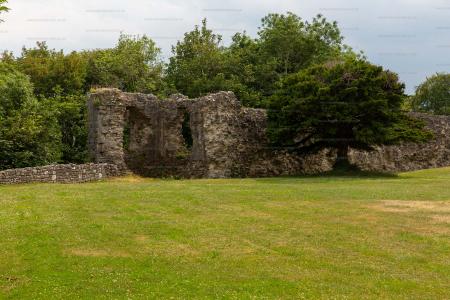Denbigh Town Walls
Denbigh Town Walls is in Denbigh Castle and Town Walls.
Exchequer Gate
Only the foundations of the Exchequer Gate [Map] on the western side of the walls remain but the gatehouse would originally have been protected by two circular towers.
Burgess Gate
The Burgess Gate [Map] has two circular towers protecting a vaulted passage way. It is built from white limestone and yellow sandstone, with the stonework forming a chequered design; this was a common decorative approach at the time. The top courses have been lost, the gatehouse might originally have stood up to 18m tall.
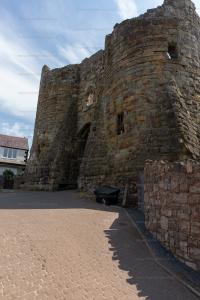
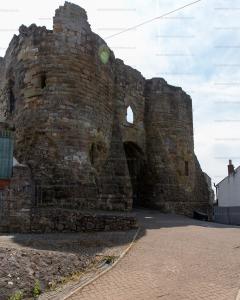
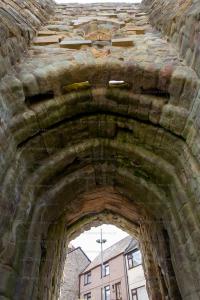
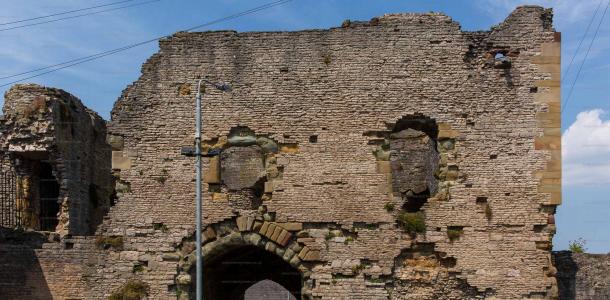
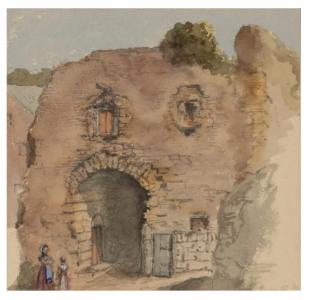 1800. Unknown Painter. Watercolour entitled Denbigh, of a ruin and street scene. Attributed to John Paget 1811-1898. Probably the rear of the Burgess Gate [Map].
1800. Unknown Painter. Watercolour entitled Denbigh, of a ruin and street scene. Attributed to John Paget 1811-1898. Probably the rear of the Burgess Gate [Map].
Chester Archaeological and History Society 1856 Page 48. Burgess Gate [Map] at Denbigh Castle.
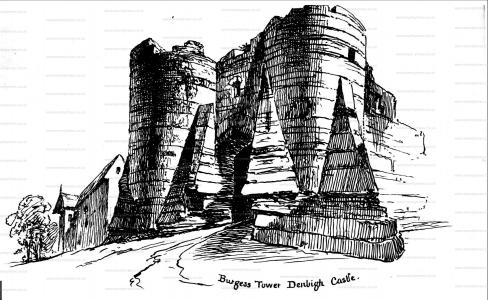
Wall Burgess Gate to Entrance
Section of the Wall [Map] from the Burgess Gate [Map] to the Current North Entrance [Map].
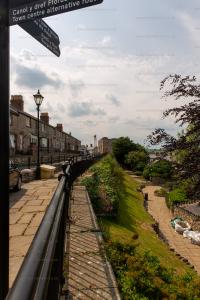
Current North Entrance
The Current North Entrance [Map] is padlocked. The key can be obtained from the castle shop for which a deposit is required.
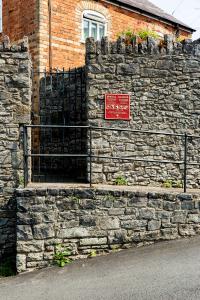
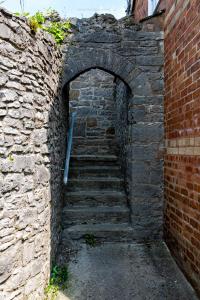
Wall Entrance to North-Eastern Tower
Section of the Wall [Map] from the Entrance [Map] to the North-Eastern Tower [Map].
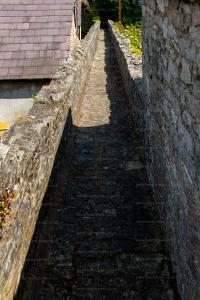
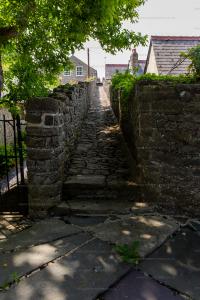
North-Eastern Tower
The North-Eastern Tower [Map] is a two-storey tower of which most remains. It protects a point at which the walls turn through an angle.
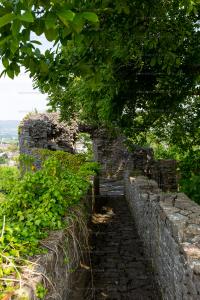
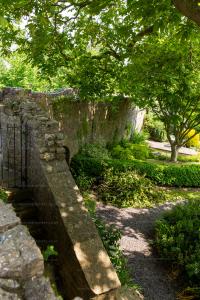
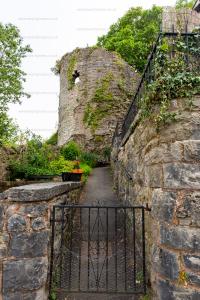
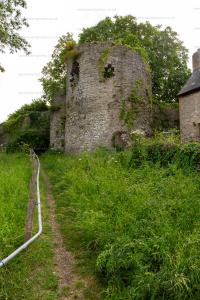
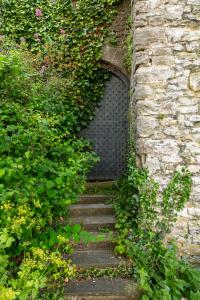
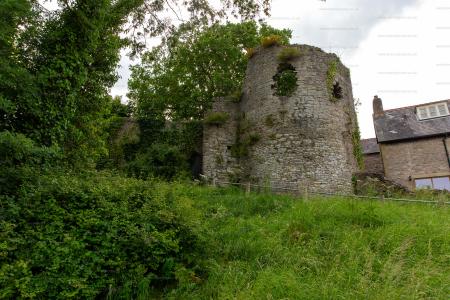
Wall North-Eastern Tower to Countess Tower
Section of the Wall [Map] from the North-Eastern Tower [Map] to the Countess Tower [Map].
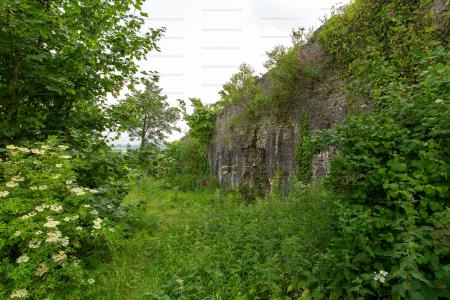
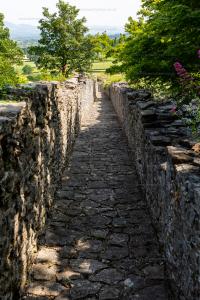
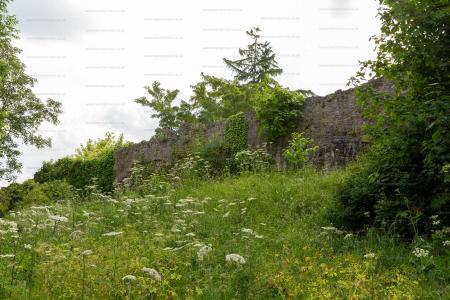
Countess Tower
The Countess Tower [Map] was a complex of two four-sided corner towers and a small two-storey building on their southern side. The northern tower of this complex was extended entirely beyond the perimeter of the walls, at least two-storey and equipped inside, in the south-east corner with a fireplace. The eastern tower was larger, also heated by a fireplace on the lower floor, but it only slightly protruded beyond the face of the wall.
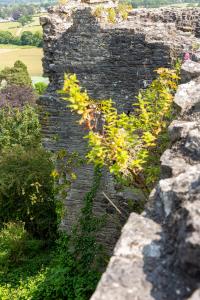
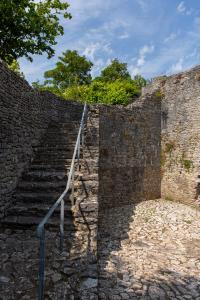
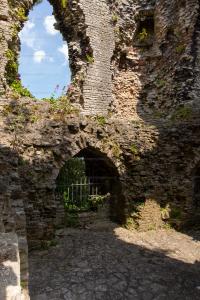
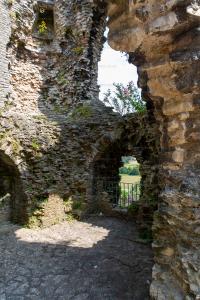
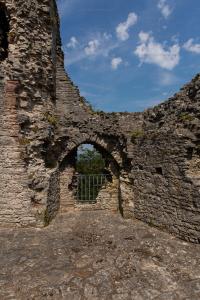
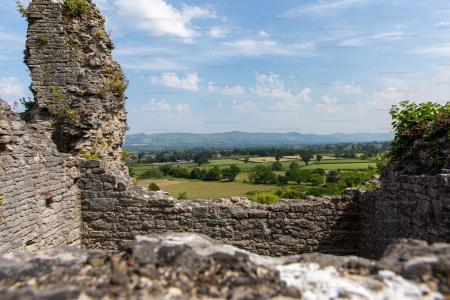
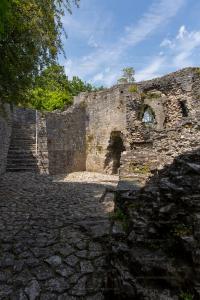
Countess Tower [Map] and Goblin Tower [Map] Plan according to L. Butler.
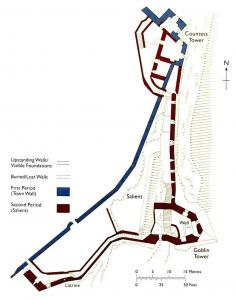
Wall Countess Tower to Goblin Tower
Wall [Map] Section between the Countess Tower [Map] and Goblin Tower [Map].
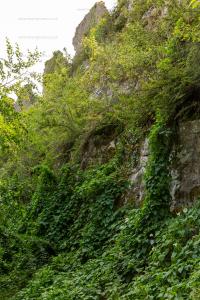
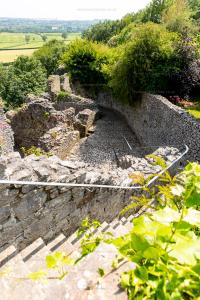
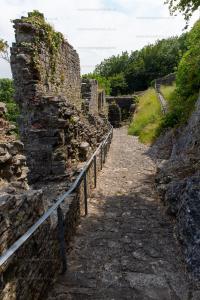
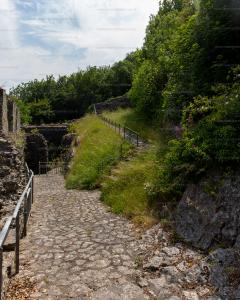
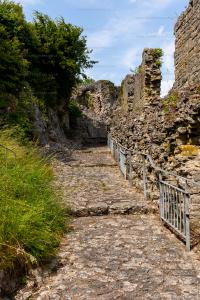
Goblin Tower
The Goblin Tower [Map] was a polygonal tower, protruding beyond the perimeter of the wall on a rocky cliff. It was 15 meters high (21 meters above the rock slopes on the outer side) and had large buttresses reaching 5 meters from the north. Inside, a narrow stone staircase led to the lower floor with the well. The upper floor was accessible by the staircase at the northern wall. It housed a fireplace with a cleverly placed smoke escape shaft. The section of the massive outer wall that connected the Goblin and Countess towers had two levels of arrowslits: the upper one accessible from the crown of the defensive walkway and the lower at the path between the towers. To the south of the Goblin Tower, the defensive walk-wall reached another wicket gate, secured by a small drawbridge, connecting to the main perimeter of the town walls. The next strengthening of the perimeter of the walls was the semi-cylindrical southern tower (Bastion Tower), located at a fairly distant distance, right next to the defensive walls of the castle. Originally, it had three or four floors and a checkered decoration made of yellow sandstone, similar to the Burgess Gate.
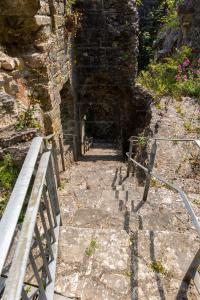
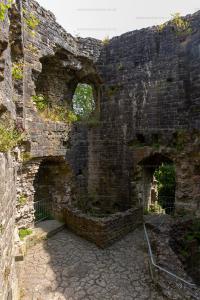
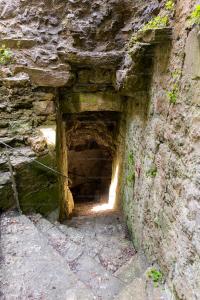
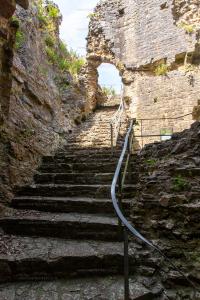
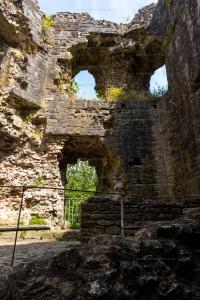
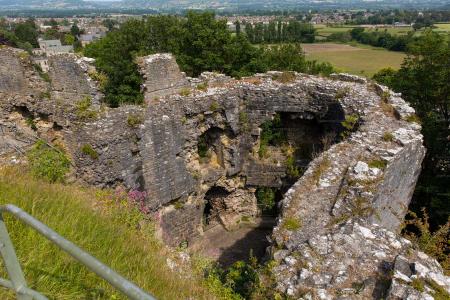
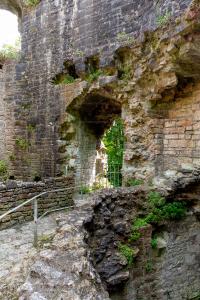
Exterior of the Goblin Tower [Map]
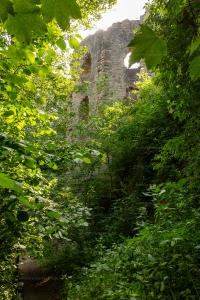
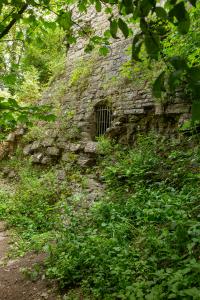
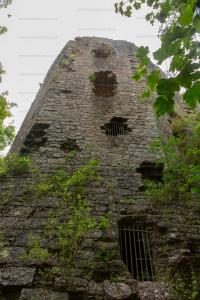
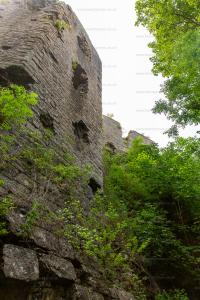
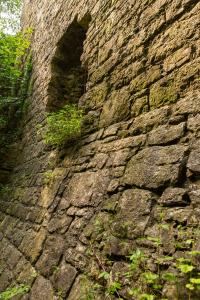
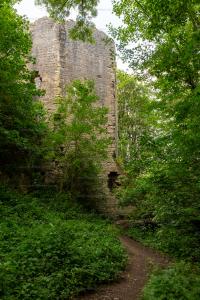
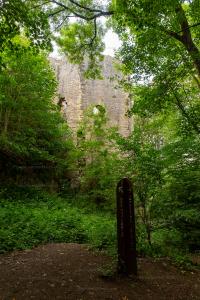
Stairs leading to the Well at the bottom of the Goblin Tower [Map].
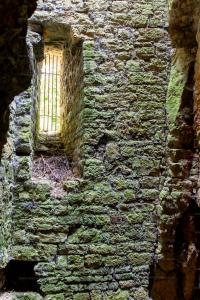
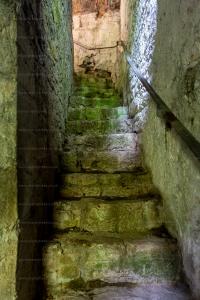
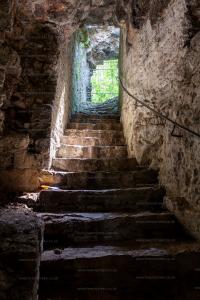
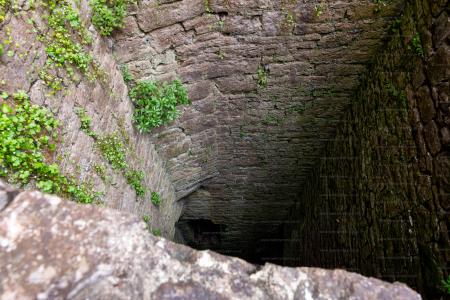
Chester Archaeological and History Society 1856 Page 48. Goblin Tower [Map] at Denbigh Castle.
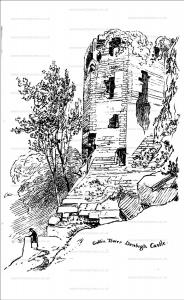
Chester Archaeological and History Society 1856 Page 48. The Goblin Tower [Map]. Denbigh Castle.
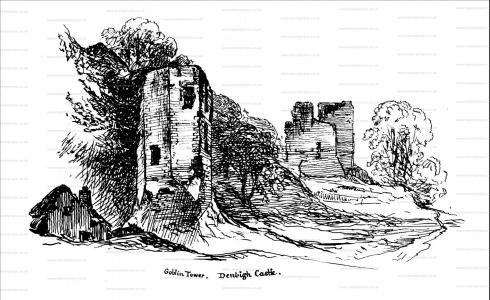
Unamed Gate
The walls are further protected by an Unamed Gate [Map] which would originally have had a drawbridge over which steps are now constructed.
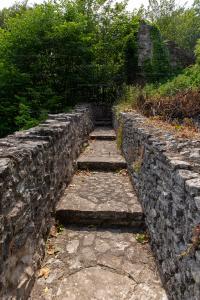
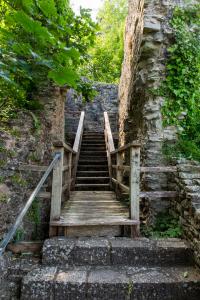
Current South Entrance
The Current South Entrance [Map] is somewhat harder to find that the Current North Entrance [Map] being surrounded by trees.
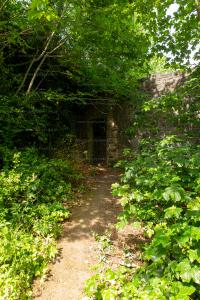
Path to South Entrance
The Path [Map] to the Current South Entrance [Map] is next to the Castle car-park through an opening in what remains of the Wall where it turns down towards the Unamed Gate [Map].
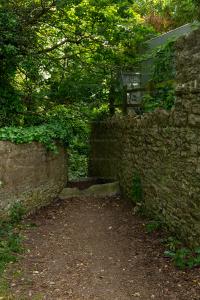
Bastion Tower
The Bastion Tower [Map] was originally three storeys tall and was decorated with chequered sandstone and limestone in a similar fashion to the Burgess Gate.
